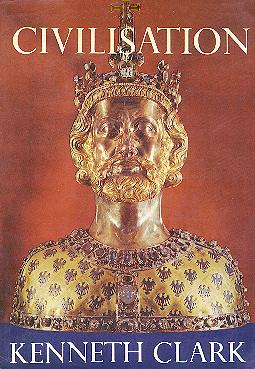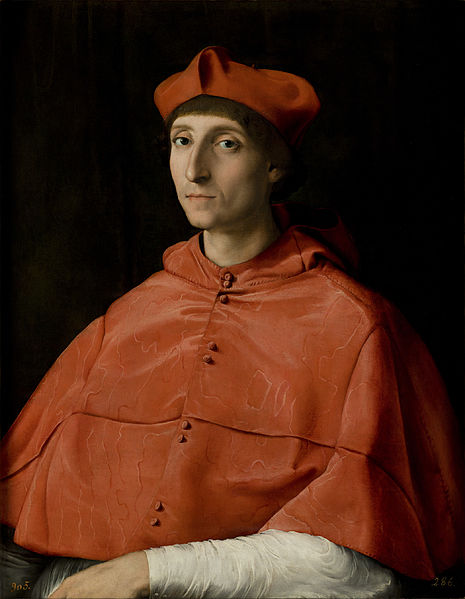For an introduction to these series, see here.
Below, some indented excerpts of “Protest and Communication,” the sixth chapter of Civilisation by Kenneth Clark, after which I offer my comments.
Ellipsis omitted between unquoted passages:
The dazzling summit of human achievement represented by Michelangelo, Raphael and Leonardo da Vinci lasted for less than twenty years. It was followed (except in Venice) by a time of uneasiness often ending in disaster. For the first time since the great thaw civilised values were questioned and defied, and for some years it looked as if the footholds won by the Renaissance—the discovery of the individual, the belief in human genius, the sense of harmony between man and his surroundings—had been lost. Yet this was an inevitable process, and out of the confusion and brutality of sixteenth-century Europe, man emerged with new faculties and expanded powers of thought and expression.
In this room in the castle of Würzburg are the carvings of Tilman Riemenschneider, one—perhaps the best—of many German carvers in the late Gothic style. The Church was rich in fifteenth-century Germany, and the landowners were rich, and the merchants of the Hanseatic League were rich; and so, from Bergen right down to Bavaria, sculptors were kept busy doing huge, elaborate shrines and altars and monuments like the famous group of St George in the old church at Stockholm: a supreme example of late Gothic craftsman deploying his fancy and his almost irritating skill of hand.
The Riemenschneider figures show very clearly the character of the northern man at the end of the fifteenth century.
First of all, a serious personal piety—a quality quite different from the bland conventional piety that one finds, say, in a Perugino. And then a serious approach to life itself. These men (although of course they were unswerving Catholics) were not to be fobbed off by forms and ceremonies. They believed that there was such a thing as truth, and they wanted to get at it. What they heard from Papal legates, who did a lot of travelling in Germany at this time, did not convince them that there was the same desire for truth in Rome, and they had a rough, raw-boned peasant tenacity of purpose. Many of these earnest men would have heard about the numerous councils that had tried throughout the fifteenth century to reform the organisation of the Church. These grave northern men wanted something more substantial.
So far so good. But these faces reveal a more dangerous characteristic, a vein of hysteria. The fifteenth century had been the century of revivalism—religious movements on the fringe of the Catholic Church. They had, in fact, begun in the late fourteenth century, when the followers of John Huss almost succeeded in wiping out the courtly civilisation of Bohemia. Even in Italy Savonarola had persuaded his hearers to make a bonfire of their so-called vanities, including pictures by Botticelli: a heavy price to pay for religious conviction.
The Germans were much more easily excited. Comparisons are sometimes an over-simplification; but I think it is fair to compare one of the most famous portraits, Dürer’s Oswald Krell, with Raphael’s portrait of a cardinal in the Prado [above]. The cardinal is not only a man of the highest culture but balanced and self-contained. Oswald Krell is on the verge of hysteria.
Those staring eyes, that look of self-conscious introspection, that uneasiness, marvellously conveyed by Dürer through the uneasiness of the planes in the modelling—how German it is.
Four pages later Clark devotes several pages to Erasmus of Rotterdam, whom Bronowski praised even more in The Ascent of Man. I have quoted Clark at length on the German character because I believe that Nietzsche was spot on in blaming Luther and Protestant hysteria for the restoration of Christianity when Christendom was falling apart in the times of the Renaissance popes. But in the next entry I will try to convey some of my antichristian thinking by taking the Catholic Erasmus to task. Meanwhile let’s continue with Clark’s views:
In 1506 Erasmus went to Italy. He was in Bologna at the exact time of Julius II’s famous quarrel with Michelangelo; he was in Rome when Raphael began work on the Papal apartments. But none of this seems to have made any impression on him. His chief interest was in the publication of his works by the famous Venetian printer and pioneer of finely printed popular editions, Aldus Manutius. Whereas in the last chapter I was concerned with the enlargement of man’s spirit through the visual image, in this one I am chiefly concerned with the extension of his mind through the word. And this was made possible by the invention of printing.
Printing, of course, had been invented long before the time of Erasmus. Gutenberg’s Bible was printed in 1455. But the first printed books were large, sumptuous and expensive. It took preachers and persuaders almost thirty years to recognise what a formidable new instrument had come into their hands, just as it took politicians twenty years to recognise the value of television. The first man to take advantage of the printing press was Erasmus. He poured out pamphlets and anthologies and introductions; and so in a few years did everyone who had views on anything.
This should remind us of our own age! Take heed of the elucidating excerpts from a 2009 interview of James Bowery by Jim Giles.
Bowery said: “We are essentially living under a theocracy. I call it Holocaustianity but other people call it political correctness. It’s essentially a canon of morals that have taken over Christianity, and the primary sins of this religion involve ‘racism’ which is an undefined word, and anti-Semitism (sexism is certainly down their list; it is like a venial sin, not a mortal sin). So people have been indoctrinated in this by the media and the academia. The government has passed legislation about these morals to make them violation of law. So people [in the 21st century] are essentially in a medieval mindset, living in a theocracy. It’s just that it is not operating under that name… Right now people are essentially in a State where there cannot be a Protestant Reformation. You can’t have other religions than this State religion of political correctness” (39:40).
And later during the interview Bowery added: “Let me go back to my point about the theocracy, and the dissolution of the theocracy in Europe. The Gutenberg press created a situation in which the monopoly of the Church on the written word was broken. A large portion of what the Church was about was media control. So through the media control they could indoctrinate the populations and maintain, you know, a revenue stream. The Gutenberg press broke that. Now all of a sudden you get lots of other voices. As I said, I have been working in this Internet stuff since the early days” (1:29:42).
And that is altogether crucial for our cause. Bowery concludes: “I knew this time was coming. The Internet is the new Gutenberg press. And the theocracy is being taken apart because its control of the media is being taken apart. And we are getting a new Protestant Reformation and following on the heels of that, people are going to say: ‘Look: We have our own beliefs… This is the way things should be.’ Even the Jesuits just couldn’t stand up to that. I don’t think the Jews can’t either.” (1:31:35).
That’s exactly why Erasmus was so notable, as the nationalist Internet bloggers will be equally notable from the standpoint of a latter-day Clark in the coming ethno-state, once the current theocracy falls apart.
Both Erasmus and Luther were involved in important translations of the Bible that shaked the medieval worldview. Although in the next episode Clark spoke highly about Counterreformation art, after the last indented quotation he said: “Whatever else he may have been, Luther was a hero; and after all the doubts and hesitations of the humanists, and the hovering flight of Erasmus, it is with a real sense of emotional relief that we hear Luther say: ‘Here I stand.’” However, at the same time Clark was also dismayed that the Protestants smashed the colored glasses of beautiful Catholic churches, and that artistic images of the Virgin were decapitated.
But it had to happen if civilisation was not to wither, or petrify. And ultimately a new civilisation was created—but it was a civilisation not of the image, but of the word.
But even the Protestant reaction had to be triumphed over, this time by secularism.
It is refreshing to see, in the closing remarks of the episode, Clark praising Montaigne as “completely sceptical about the Christian religion” and of Shakespeare as “the first great poet without a religious belief.”




One reply on “Civilisation’s “Protest and Communication””
This Bowery quote says it all.